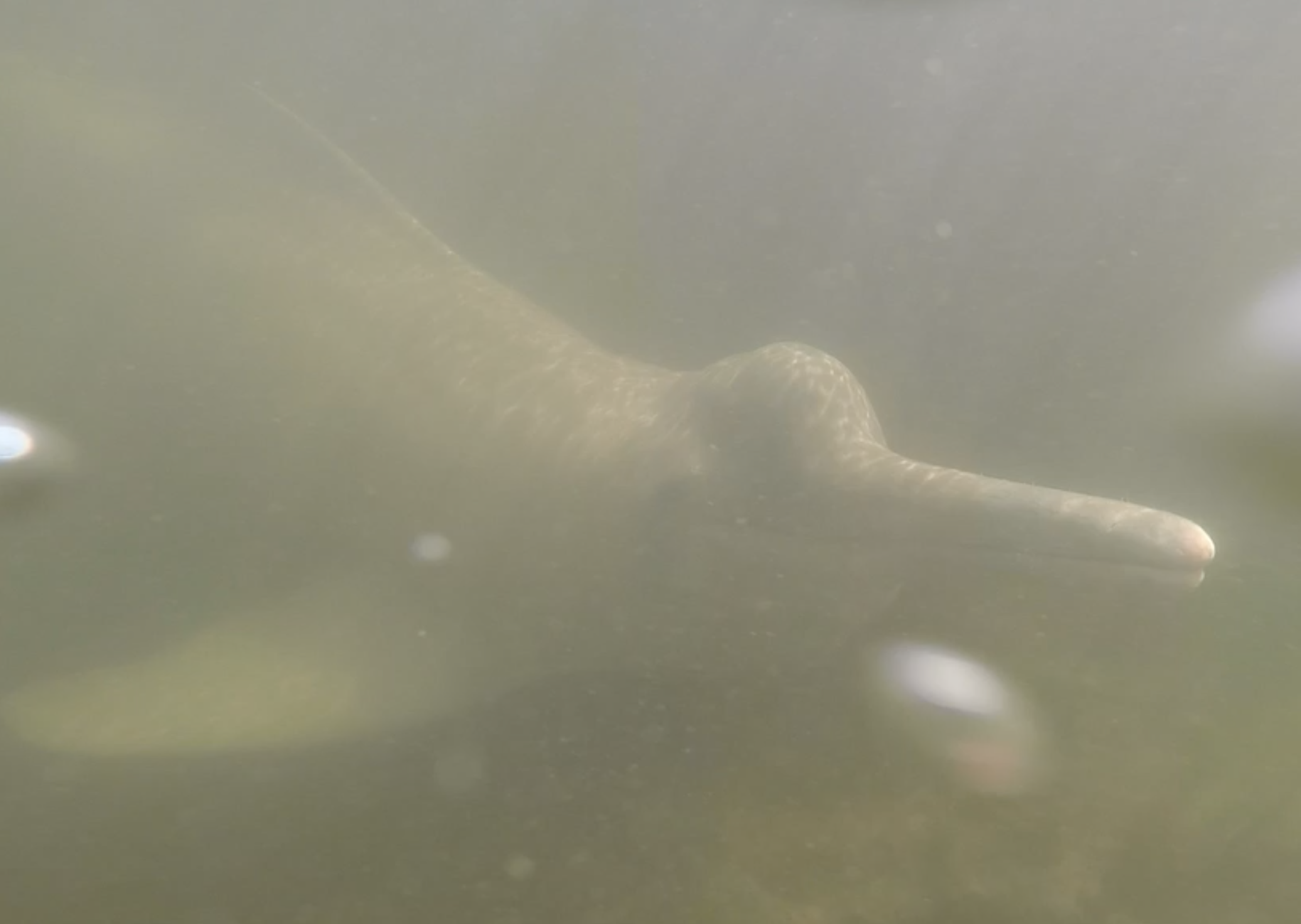
The rare Araguaian river dolphin is a mysterious creature, native to Brazil, that researchers have long thought to be solitary. Because of this assumption, it was believed that the animals would not be capable of complex communication, given that their social structure does not require it.
But now, scientists from the University of Vermont have discovered that the dolphins do interact with one another and can make hundreds of different sounds for the purposes of communication, according to a study published in the journal PeerJ.
"In the past, these animals were thought to be silent," Laura May Collado, a biologist at the University of Vermont, told Newsweek. "However, we now know that like other cetaceans, sound plays a key role in their daily life. Our study shows that unlike other river dolphins, the Araguaian dolphin is quite chatty. Recent advances in acoustic technology are allowing us to study the extent of their acoustic repertoire and the context in which these sounds are produced."
Little is known about the Araguaian dolphins, also known as botos, as they are hard to find, as well as difficult to approach. Thus, studies about them are limited. They live only in the waters of the Araguaia and Tocantins rivers, and their numbers likely do not exceed more than one and a half thousand in total.
"The Araguaian river dolphin is rare because their distribution is restricted and [they] are presumed to have low population size," Collado said. "They also show low levels of genetic diversity, which makes them more vulnerable to human threats. We know very little about their biology."
"They are hard to study because they difficult to find in their natural environment; they do not break the water surface as true dolphins do, making it hard to spot them in the field," Collado said. "In addition, their dorsal fin is very small which makes it very difficult to identify individuals using natural marks. A traditional method to study cetaceans is by photographing the natural marks of their dorsal fins—or tails in the case of whales."
Fortunately, the research team was able to find a fish market in the town of Mocajuba where the dolphins often visit because people give them food.
Here, the team used underwater cameras and microphones to record the sounds and interactions between the dolphins at the market. In addition, they took some DNA samples from the animals.
Overall, they captured around 20 hours of recordings, identifying 237 different types of sounds. But even with nearly an entire day of material, the team speculated that the dolphins can produce more sounds than they recorded. Many of the sounds were short, two-part calls, which baby dolphins made when approaching their mothers.
"One type of sound stood out from the others; we called it the two-component call. These calls were emitted by calves as they reunited with their moms," Collado said. "As far as we know this is the first time such contact calls have been described for river dolphins."
"The acoustic nature of these calls is similar to calls produced by true dolphins and other marine mammals," she said. "For example, killer whales emit similar calls but are used in the context of family recognition. In the future we want to look at the evolution of these sounds and study the role these signals may be playing inmother-calf recognition in this species."
The scientists also recorded the dolphins making longer calls and whistles, but these were not so frequent, and it is unclear what their purpose is. In marine bottlenose dolphin communication, longer whistles are used to boost group cohesion. But the researchers think the botos may use them for the opposite reason—to maintain distance.
The team said that the frequency of the river dolphin calls was somewhere between the low-frequency sounds made by baleen whales to communicate over long distances and the high-frequency calls used by marine dolphins over short distances. Collado suggested that the acoustic characteristics of their calls were likely influenced by the river environment that they live in.
"There are a lot of obstacles, like flooded forests and vegetation, in their habitat, so this signal could have evolved to avoid echoes from vegetation and improve the communication range of mothers and their calves," she said.
The Araguaian dolphins were identified as a distinct species only in 2014, differentiating them from their close relatives—the Bolivian river dolphin and the Amazon river dolphin. While the classification of Araguaian botos is still up for debate, Collado noted that calls between the species show significant differences—Ecuadorean Amazon river dolphins are very quiet, for example.
"We need more information on these other species and more populations," she said. "Why is one population chattier than others, and how do these differences shape their social structure?"
According to Collado, the new findings could have significant implications for our understanding the evolutionary history of these animals.
"River dolphins are evolutionary relics; they are the only living species of a long extinctic lineages," she said. "By understanding their acoustic repertoire we are learning about their social life which is poorly understood, and we are able to generate insights on how these signals and their function has evolved in other cetaceans."
Investigations into the lives of these animals are all the more urgent given that they have been declared a vulnerable species by the government of Brazil. The major threat they face is habitat fragmentation caused by pollution and the building of hydroelectric dams.
This article was updated to include additional comments from Laura May Collado.
Uncommon Knowledge
Newsweek is committed to challenging conventional wisdom and finding connections in the search for common ground.
Newsweek is committed to challenging conventional wisdom and finding connections in the search for common ground.
About the writer
Aristos is a Newsweek science reporter with the London, U.K., bureau. He reports on science and health topics, including; animal, ... Read more
To read how Newsweek uses AI as a newsroom tool, Click here.








